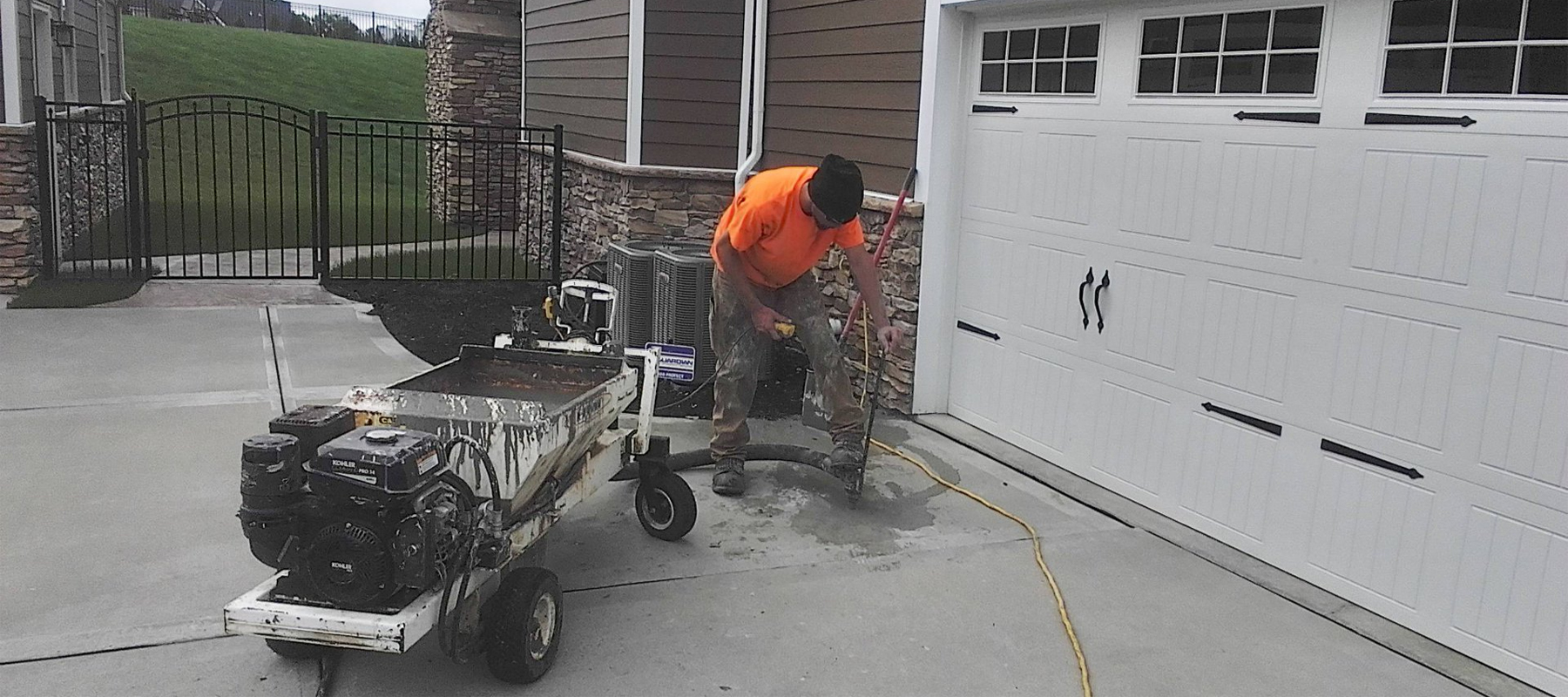How Much Does Polyurethane Concrete Lifting Cost?
Last Updated: June 01, 2023

Fact Checked By: Ryan Maguire
On This Page
Cracked, sunken, or uneven concrete is an unsightly problem that should be taken care of as soon as possible. Beyond just looking bad, it can lead to other damage and cause injuries. Polyurethane foam injection is an effective way to raise, level, or lift concrete in lieu of replacing the existing slab.
What Is Polyurethane Foam Injection? #
Polyurethane foam injection, also referred to as foam jacking, is the process of drilling holes into concrete and injecting them with polyurethane foam. As the foam expands, the concrete raises and levels out. The foam first expands into the soil, causing the dirt to become denser as the foam fills the voids beneath the concrete. This process requires fewer holes to be drilled into the concrete, because the foam expands in every direction (sometimes up to seven feet).
Once the foam has been injected, it only takes 30 minutes to set up. The polyurethane foam does not retain moisture or settle over time, making it a durable jacking method. Once the process is complete, the holes that were drilled into the slab are filled (typically with concrete).
Benefits of Polyurethane Foam Jacking #
There are several benefits that come with polyurethane foam injection. For one, it is the cleanest way to lift and stabilize concrete. Loose material is unable to make its way to the repair area, as the injection equipment is connected mechanically to the slab. And when there is no material being injected, mechanical seals lock to prevent contamination. The entire process is quick, with many crews able to begin lifting a slab within 10 minutes of arriving at the site and foam setting taking only 30 minutes.
Polyurethane foam injection is also:
- Less disruptive: The speed of foam injection is a selling point for many people, but it is also a very quiet process. Since the holes drilled into the concrete are small, the process causes less noise and result in less debris, with all the equipment in a self-contained box truck. The injection process itself is incredibly quiet, as well.
- Lightweight: Polyurethane foam is the lightest concrete stabilization material available. It reduces the burden placed on the underlying soil and reduces the chance of resettlement down the road.
- Waterproof: High-density polyurethane foam is entirely waterproof, providing a tight seal underneath the slab. The foam can even be installed in water.
How Much Do Polyurethane Concrete Lifting Cost? #
The price of polyurethane foam injection is determined by equipment, job complexity, slab size, and location, so it is difficult to provide an exact cost. Here is a general pricing guide to provide an idea of what you can expect to pay for polyurethane foam injection:
- The cost of an average residential polyurethane foam injection is between $2,400 and $3,600.
- For smaller residences, the average cost of polyurethane foam injection is between $10 and $25 per square foot.
- For larger, commercial properties (20,000 square feet or more) the average cost of polyurethane foam injection is between $8 and $20 per square foot.
Average Foam Injection Prices By Location (Updated 2023): #
| City or State | Zip Code | Average Price Paid |
|---|---|---|
| Boston, MA | 02115 | $6,400 |
| Miami, FL | 33101 | $1,771 |
| Los Angeles, CA | 90001 | $1,735 |
| New York City | 10001 | $2,528 |
| Phoenix, AZ | 85001 | $1,069 |
| Las Vegas, NV | 88901 | $1,516 |
| Houston, TX | 77084 | $1,328 |
Best Uses for Polyurethane Foam Injection #
While polyurethane foam jacking is suitable for most concrete raising or stabilizing projects, there are some situations that are better for foam injection than others.
- Heavy slabs: Polyurethane foam has the ability to spread under large areas before expanding and a high expansion force, which allows it to easily lift heavier slabs. Bridge approaches, rail crossings, and roadway slabs commonly utilize foam injection.
- Large slabs: In the same way that polyurethane foam's ability to spread helps it lift heavy slabs, it also helps it to lift larger slabs. Foam jacking is a great way to repair slabs bigger than 100 square feet.
- Load-sensitive slabs: Slabs that continuously have to bear heavy loads commonly fall prey to slab and soil settlement. Polyurethane's low weight (around 2.5 to 6 pounds per cubic foot) and its expansion abilities transfer very little weight to the underlying soil. This provides enhanced strength for the slab, without the risk of resettlement underneath.
- Sensitive areas: Settled slabs with decorative coatings, overlays, or surface treatments that need to be lifted or leveled are tricky because you don't want to damage the top. Foam injection uses the smallest possible holes, making it ideal for those trying to maintain the surface of the slab. These holes are then filled with the desired concrete to match the rest of it.
